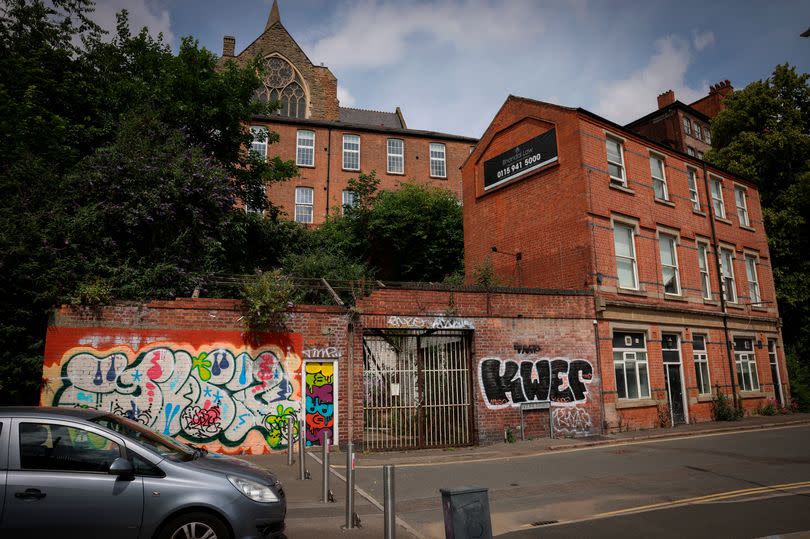New Nottingham café to be built at bottom of historic cliff where terrible city slums once stood

A new café will allow customers to sit at the bottom of a cliff steeped in the darkest parts of Nottingham's long history. Nottingham City Council has granted permission for an old and graffitied warehouse on Cliff Road, near to Nottingham College's city campus and the tram bridge skatepark, to be torn down and replaced with a food and drinks venue and housing.
A pair of three-storey replacement structures be used as houses in multiple occupation (HMOs), while a small extension and the caves behind it will form the new café. HMOs are houses where three or more tenants from different households live in one property, sharing bathrooms and kitchens.
An area that is currently fenced off will be used as a garden for customers of the new café, planning documents submitted by applicant B Bhandal added. This new garden would allow users to "experience the cliff structure", which played an intriguing part in Nottingham's dark history.
Get the latest news straight to your phone by joining us on WhatsApp
Cliff Road once formed part of the infamous Narrow Marsh district, which was a vast slum mostly inhabited by textile workers who had flooded into the city in the 1820s. Nestled atop the cliffside in High Pavement was the county gaol, where prisoners were placed into dark and dank prison cells built into the side of the 70ft drop.
The applicant's planning agent argued the changes to the building, including the removal of a set of stairs and bins, would enhance the character of the conservation area. Officials from Nottingham City Council agreed with this point and explained the plans would have "significant visual and townscape benefits" if implemented.
A council officer added the former warehouse was in a dilapidated state and had been vacant for a long amount of time - with it missing a roof for a number of years. They concluded it was not realistic for the building to be returned to an industrial use and acknowledged the HMO housing provided would be suitable to the building's "rather unique" location.
The Civic Society had raised concerns that insufficient information had been provided on what impact the development could have on nearby historic caves, according to planning documents, but the applicant later confirmed there should be no impact on the caves. A city council planning officer, granting the application planning permission, added: "Its modest scale would also respect the character and appearance of the elevated buildings on the southern edge of the Lace Market behind the site."

 Yahoo News
Yahoo News 
